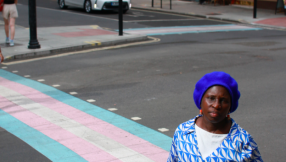Laser resurfacing fixes wrinkles, study finds
Carbon dioxide laser resurfacing was very effective and while there were some side-effects, such as lightening or darkening of the skin, they almost always cleared up, Dr. Daniel Ward and Dr. Shan Baker of the University of Michigan reported.
"Use of the laser allows precise treatment, giving the surgeon more control over the resurfacing procedure than is possible with other techniques such as chemical peels and dermabrasion," they wrote in the journal Archives of Facial Plastic Surgery.
Carbon dioxide lasers vaporize water molecules inside and outside of cells, damaging the surrounding tissue. Skin cells respond by producing collagen, which in turn fills in wrinkles.
Dermatologists had been looking for alternatives, because the process can either bleach the color out of the skin or cause uneven darkened patches. It can also cause outbreaks of herpes simplex virus, which causes cold sores and skin blistering.
Ward and Baker studied 42 women and five men with an average age of 52 who had laser resurfacing of the entire face between 1996 and 2004.
Most had complications but 45 percent had none. Most of the complications were acne or milia - the appearance of small, white bumps, most of which disappeared when treated.
Only one had a herpes outbreak and one developed sagging eyelids, they reported.
"The efficacy of treating facial rhytids (wrinkles) with the carbon dioxide laser is well established, and the short- and long-term utility of the carbon dioxide laser in treating solar facial aging has previously been documented," they wrote.
"In terms of results, carbon dioxide laser resurfacing remains the gold standard," dermatologist Dr. Paul Carnoil, of Summit, New Jersey, wrote in a commentary.
He said other types of lasers did not reduce wrinkles as well as carbon dioxide lasers.













